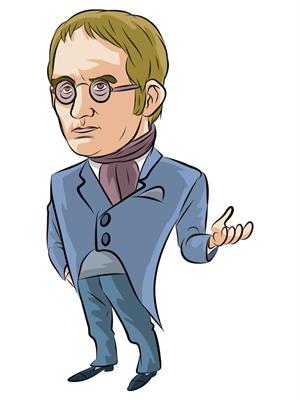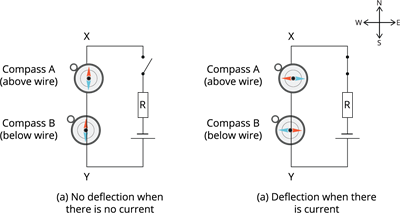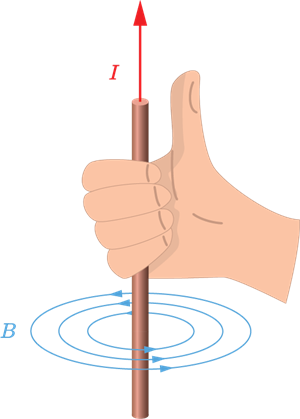
PUMPA - SMART LEARNING
எங்கள் ஆசிரியர்களுடன் 1-ஆன்-1 ஆலோசனை நேரத்தைப் பெறுங்கள். டாப்பர் ஆவதற்கு நாங்கள் பயிற்சி அளிப்போம்
Book Free DemoHans Christian Oersted, a Danish physicist, was giving a lecture on April \(21\), \(1820\). In that class, he was demonstrating electrical circuits. During the lecture, he had to turn on and off the circuit frequently. While doing so, he noticed the needle of the magnetic compass moves on the table by accident. When he turned on the light, it deflected, and current flowed through the wire.

Hans Christian oersted
The compass needle moved so slowly that the audience was completely unaware of it. Oersted, on the other hand, could see that something significant was taking place. He carried out numerous experiments in order to discover a startling effect known as the Magnetic effect of current.

Deflection of magnetic compass
Oersted aligned a wire \(XY\) so that it was perfectly parallel to the North-South axis. At \(A\), he kept one magnetic compass above the wire, and at \(B\), he kept one below the wire. Both compass needles pointed north when the circuit was open, and no current was flowing through it. The needle at \(A\) pointed east, and the needle at \(B\) pointed west once the circuit was closed and the electric current flowed. This demonstrated that a current-carrying conductor generates a magnetic field around itself.
We can use the right-hand thumb rule to determine the direction of magnetic lines around a current-carrying conductor. Hold the wire in your right-hand with four fingers and thumbs up. If the current is flowing in the direction of the thumb, the magnetic lines will curl in the same direction as the other four fingers. This demonstrates that the magnetic field is always perpendicular to the current flow.

Right-hand thumb rule
The magnetic field strength at a point caused by a current-carrying wire depends on
(i) The current in the wire
(ii) The distance between the point and the wire
(iii) The point's orientation relative to the wire
(iv) The magnetic nature of the medium
Near the current-carrying wire, the magnetic field lines are stronger, and as you move away from it, the magnetic field lines become weaker. It is indicated by drawing magnetic field lines closer together near the wire and farther away from the wire.